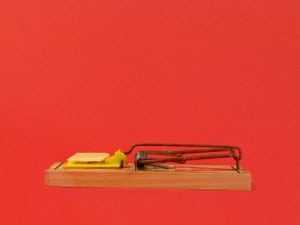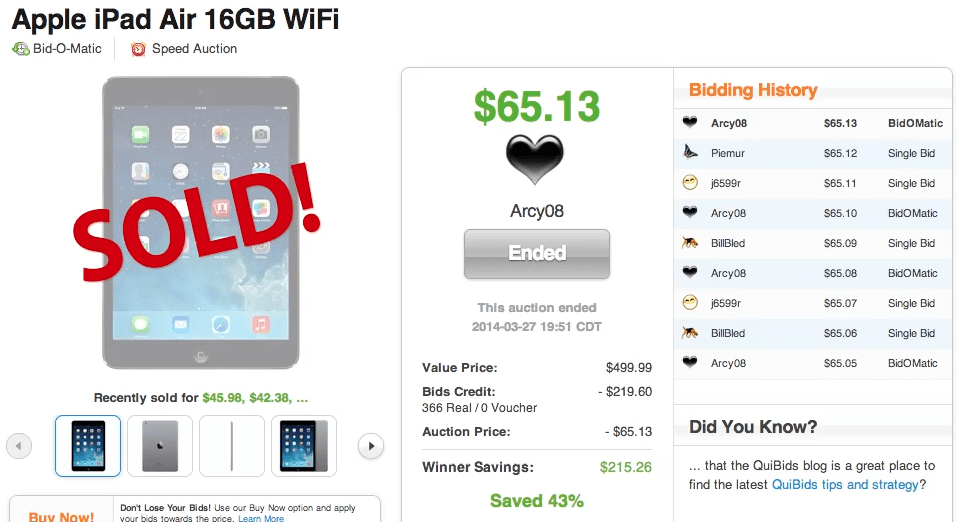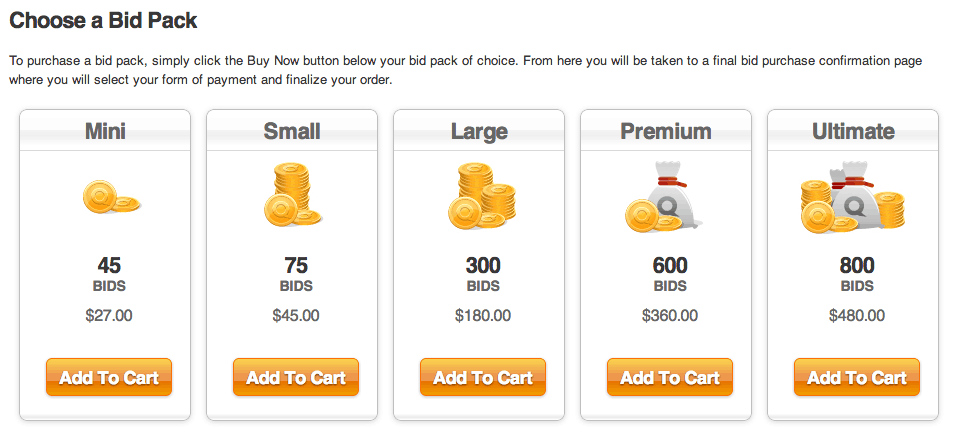Nir’s Note: This article about the psychology of auction addiction was authored by Lisa Kostova, one of the first product managers at Farmville and CEO and Founder of CareerClimb™. While at Zynga, Lisa learned how to shape user behavior, but in this essay she describes her surprise when she found herself unexpectedly hooked.

I experienced a mix of emotions as my adrenaline rushed and the clock ticked. Minutes earlier I didn’t even know the product on sale existed, but now I had to have it. Worse still, I couldn’t peel myself away from the screen. I needed to cook dinner, but I decided it could wait. I ached to go to the bathroom, but I had to hold it.
As the auction ticked on, the realization finally set in. I understood what was going on. It became painfully clear to me that I had fallen prey to an online compulsion. I should know, I had designed these sorts of habit-forming technologies as a product manager working on Farmville for Zynga.
The Hold
It’s the feeling that takes control of your fingers when you can’t stop eating popcorn during an exciting movie. It’s the desire to keep playing an online game. It’s the need to keep endlessly scrolling through a social media feed, again and again. It’s the feeling that traps your inner critic inside a zombie shell, temporarily suspending rational judgment.
It’s what Natasha Dow Schüll calls “Addiction by Design” in her book by the same name. I heard her speak at Nir Eyal’s Habit Summit in a crammed conference hall at Stanford University the day after I fell into my own online auction addiction. Dr. Schüll described the science behind how designers of casino slot machines create their perfect mouse traps. Their machines come complete with sensory stimuli, an altered sense of reality, and a false perception of winning. I silently thanked Nir for inviting Dr. Schüll to hold a mirror up to the audience to reveal habit’s ugly cousin — addiction. At times, it’s hard to tell the two apart.
The Habit Summit and my online auction binge made it clear to me that my work as a practitioner of behavior design did not guarantee immunity from potential technology addiction. Having worked as a product manager on Farmville and other Zynga games, I thought I had learned all there was to know about creating user compulsions. Buildable items, quests, drip rewards, mystery boxes — these were the tools of my trade. I had witnessed the power of compulsion in social games but what I experienced on an online auction site called Quibids, sent shivers down my spine.
How to sell a $4,000 iPad

Quibids has many things in common with gambling. The online auction site lets users bid on popular items, such as iPads and Playstations, and potentially win them for a fraction of the retail price. The design is as brilliant as it is sinister. To participate in a Quibids auction, users buy bids at a cost of 60 cents each. The auction has a count-down timer that “sells” the item to the highest bidder when the clock reaches zero. Every time someone places a bid, the price of the item is raised 1 cent and 10 seconds are added to the timer.
For example, an iPad which retails for $499 was recently sold for $65.13. The winning bidder used 366 bids costing $219.60 ($0.6 x 366) plus the sale price for a total out of pocket cost of $284.73. Not bad for a brand new iPad Air.
Quibids prominently displayed these “savings” after the auction ended to showcase the value of the deal. What Quibids did not show however, was that the auction netted the company $3,972.90. A total of 6,513 bids, each costing 60 cents, were spent on the auction. In other words, Quibids figured out a way to sell an iPad for over eight times the retail price.
Knowing the rules of the game, a rational person should construct a strategy that goes something like this: Set a maximum budget of bids that never exceeds the retail value of the item. Then, wait for the clock to go down to 1 second before placing a bid. Next, wait for the number of bidders to decrease before starting to use one’s own bids — ideally waiting on the sidelines for other bidders to burn through their cash before making a bid. That’s what I should have done. But of course, I didn’t.
Upping the Ante
Unfortunately, the moment the auction starts, logic tends to fly out the window. The constantly changing seconds on the countdown clock transfixed me, especially when they started flashing red and got oh-so-close to zero before bouncing back again. The majority of bids are placed when the clock has at least a few seconds to go, making for a very bumpy emotional roller coaster. Often times, two players enter a bidding war whereby one person immediately counters the other, seemingly out of spite.
Quibids has also designed a way to increase the velocity of bidding. A user can place a package of bids triggered at a certain price threshold using the so-called, “BidOMatic.” Using the BidOMatic submits bids while the user is away. This mechanic enables more bids in the auction as well as allowing players to bid on multiple auctions simultaneously.

Of course, the BidOMatic increases the amount of money extracted from the user while doing little to increase their actual chances of winning. By using the BidOMatic, the user easily forgets the total cost of the bids. Even though the amount of bids spent on an auction is displayed below the item, it’s easy to lose track of how much you’ve spent on each auction when playing several auctions at once. A user can easily pay over retail if not careful.
Judging by the auction stats displayed on the site indicating whether bidders were placing single bids or BidOMatic bids, I estimated that at least half of the bids were placed using the automatic tool.
The last piece of my strategy — waiting until the competition was exhausted to place a well-timed bid at the one second mark — backfired. Quibids locks auctions after a certain number of bids have been placed, restricting the auction to the people who’ve placed recent bids and who have bid a minimum number of times. This simultaneously raise the minimum pay-in, while creating what is known as a “false win.” The remaining players are under the impression that their odds of winning the deal are now higher because there are fewer bidders. However, there is little actual upside. What Quibids has done is identify the power players and pits them against each other to maximize profit.
Lessons from a Habit-Forming Technology
Quibids has undoubtedly borrowed much from the slot machine playbook and has made improvements along the way. The key drivers of user compulsion can be summarized as follows:
-
Slot machine incremental bidding — A few cents doesn’t sound like much but hundreds of bids make it easy to lose track of how much you’ve spent in total.
-
Tapping into the compulsion to win — The initial prize of an “iPad for half the price” is an attractive hook. But as Schüll puts it, the “hold” is the compulsion to dominate the auction and beat the competition into submission. At Farmville we’d call the competitive type of player “a min-maxer” – they’d always know which crop had the most advantageous yield per minute in order to earn the most points as quickly as possible.
-
An asymmetric marketplace — For every person that gets a deal there are at least a dozen who lost — they paid something and got nothing in return. In a way, this is a similar concept to a mystery box in games, where the gamer’s willingness to pay increases with the inclusion of rare and valuable items in the loot.
-
The pressure cooker — There is nothing like a count-down timer to create a sense of urgency and the compulsion to reach for the wallet or click on the “bid” button. Social games and retail stores alike recognize the power of flash sales and there is a spike in purchases whenever a company reminds a user that they need to act quickly because a deal is going away. Experiments at Farmville showed that items would sell much better if they were being offered as a limited edition.
-
Identifying the big spenders — Locking the auctions late into the bidding creates a false sense of being close to a win. Creating an exclusive club increases the willingness to spend, squeezing more revenue out of power bidders.
A careful look at the psychology of Quibids reveals powerful mind tricks that serve as a case study in user engagement mechanics as well as a cautionary tale. As far as I’m concerned, I’m cashing in my remaining bids on Quibids so I can break my addiction and return to my relatively benign shopping habit — hunting for deals on Amazon.
Note: This guest post was authored by Lisa Kostova, CEO and Founder of CareerClimb™
Photo Credit: Rennett Stowe
Related Articles
- Schedule Maker: a Google Sheet to Plan Your Week
- Cancel the New York Times? Good Luck Battling “Dark Patterns”
- How to Start a Career in Behavioral Design
- A Free Course on User Behavior
- User Investment: Make Your Users Do the Work
- Variable Rewards: Want To Hook Users? Drive Them Crazy
- The Hooked Model: How to Manufacture Desire in 4 Steps
